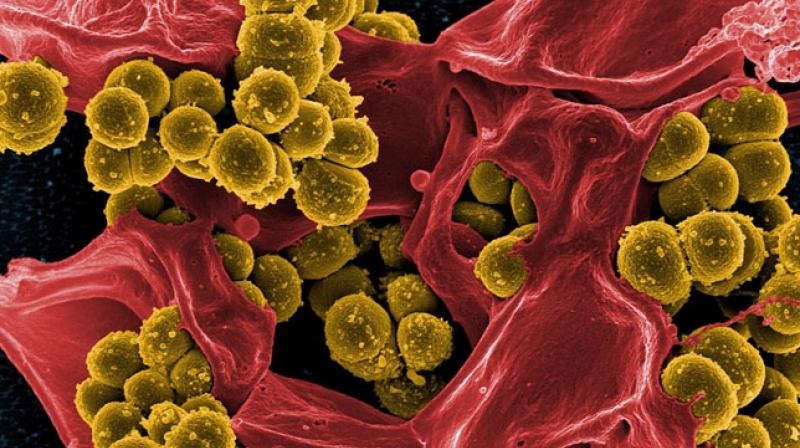Couples share not just love, but bacteria too
Researchers analysed the 330 skin swabs taken from the upper eyelids, armpits, navel, palms and feet of couples.

Hyderabad: A study conducted by the University of Waterloo claims that couples share more than love — they share each other’s microbiomes, or microbial communities, as well.
Researchers analysed the 330 skin swabs taken from the upper eyelids, armpits, navel, palms and feet of couples. Surprisingly, more than any other body part, the area with the most similar microbial community was the feet. Explaining this finding, city-based dermatologist Aiswarya Verghese said, “One would think that hands share the most microbes as partners constantly pick up what the other does but our feet walk on the same platforms including bathrooms.”
The microbes are generally those to which the body has developed resistance, and therefore do not cause any harm. Dr Indramohan, a general surgeon, said, “Organisms that dwell on the skin are known as commensal organisms. It is not that they are not harmful but they settle on the skin through contact with air, clothes and others or through touch. We build immunity against them, which is why there is no manifestation of infections.”
Couples living together share these microbes and build immunity as they are in frequent contact with each other. A third person can be harmed by these microbes, Dr Indramohan said. Microbial communities can be found all over the body including the tip of one’s nose, hair strands and nail follicles.
Medical experts say that microbial communities in two people are completely different. However, couples tend to harbour similar levels of bacterial diversity.
Dermatologist Dr Priyanka Nair said, “The study raises the question why close friends who spend time together don’t spread microbes to each other. However, each time we touch a surface, there is an exchange of microbes. Our body will accept and reject some. With couples, there is continued contact on the same surfaces, which leads to similar microbes being found on them.”
As couples build immunity towards each other’s microbes, a lot of diseases that could spread through contact like scabies, tinea corporis and pediculosis are avoided. Skin microbes can transfer and adapt with their host and surroundings.
Advantage partners
- Couples who live together share bacteria.
- Computer algorithms could identify cohabiting couples with 86 per cent accuracy in the study.
- Strongest similarities of microbial communities are found in the feet of partners.
- Least microbial diversity found on outer side of the nose.

